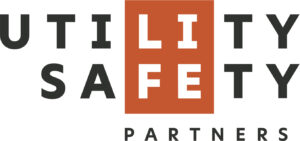2023 Safety Academy Agenda
The 2023 CUIIC Safety Academy is taking place November 29-30, 2023 in Edmonton, Alberta. Safety Academy experts will present a two-day course that is designed to equip attendees with knowledge related to underground construction safety, regulation, challenges and innovation. Attendees will get the chance to learn about the pressing issues and most up-to-date policies related to a wide range of underground construction safety topics.
Registration Includes: Full access to presentations, breakfast, lunch and coffee breaks (both days), Networking Reception on November 29th and CEUs (by request)!
Need Accommodations? Click here to take advantage of our Discounted Room Block at the JW Marriott Edmonton ICE District
2023 Safety Academy
November 29-30, 2023
JW Marriott Edmonton ICE District
Wayne Gretzky Ballroom on the Third Floor
November 29, 2023 (Day One)
Registration and Breakfast
7:00 AM – 8:00 AM
Supporting Safe and Effective Communications and Engagement for Infrastructure Delivery
Ashlene Harvey, Associated Engineering
8:00 AM – 8:45 AM
Communications and engagement are playing an increasingly prominent role in the successful delivery of infrastructure projects, with many stakeholders and members of the public expecting meaningful updates and engagement opportunities over the course of project delivery. Join Associated Engineering’s Community Engagement & Communications Specialist to learn more about communications and engagement as they relate to infrastructure projects, and some key considerations for delivering safe and effective public participation opportunities.
Asbestos in Buried Infrastructure: Ensuring Safe Handling and Disposal Practices
David Wytrykush, WSP Canada Inc. and Kody Henderson, WSP Canada Inc.
8:45 AM – 9:45 AM
A deeper understanding of the nuances required to effectively manage, abate and dispose of asbestos in buried infrastructure is required in industry. The presentation will explore the types of buried materials commonly encountered, such as asbestos cement pipe. We will also expand on the hazards and risks associated with improper handling, and strategies to safely manage, handle and dispose of asbestos-containing materials. Participants will gain further insights into retaining and managing qualified abatement sub-contractors, and some of the key considerations related to minor abatement self-performance.
Networking Break
9:45 AM – 10:00 AM
Ventilation and Safe Work Practices in Confined Spaces
Dr. Chaoshi Hu, EPCOR and Caroline Switzer, EPCOR
10:00 AM – 10:45 AM
The Ventilation and Safe Work Practices in Confined Spaces presentation will review the ventilation design for underground construction, mainly for municipal installations and the associated safe work practices in confined space.
Confined Space Safety: Maximizing Human and Organizational Performance for Safe Work Practices
Gordon Walsh, Energy Safety Canada
10:45 AM – 11:30 AM
Human and Organizational Performance 5 Principles, connecting the interactions of; Humans to Humans, to the Environment, Business Processes, and Technology. Confined space operations are inherently high risk by their very design. HOP brings to light the Critical Steps to complete this work successfully.
MicroTunneling: Best Safety Practices
Nicole Gabbert, Michels
11:30 AM – 12:00 PM
In this presentation, we will explore the intricacies of micro-tunneling safety and discuss not only the importance of proper pre-project planning, on-site operations, and post-construction assessments but share insights, best practices, and innovative strategies for enhancing safety in micro tunneling, throughout the life cycle of the project.
Networking Lunch
12:00 PM – 1:00 PM
Vibration Monitoring to Protect Infrastructure During Construction
Eddy Mar, Thurber Engineering
1:00 PM – 1:30 PM
Vibrations are generated by a variety activities and equipment during construction. Depending on the project site, existing infrastructure may be present, and consideration may be required to limit the impact of the vibrations caused by the construction activities on the existing infrastructure. This discussion will provide a general overview of vibration monitoring and how it is implemented to assist in the protection of existing infrastructure and assets in proximity to the construction activity.
HDD and Tunneling Noise Mitigation Options Overview
Horatio Schlinger, Environmental Noise Control
1:30 PM – 1:50 PM
Approach to successful implementation of permanent, temporary and customer noise control systems for tunneling, HDD and general construction projects taking into account safety requirements, operational constraints, access requirements and general feasibility assessments for installation.
Utility Engineering and its Role in Safe Construction of Infrastructure
Laurie LeBlanc, T2 Utility Engineers Inc. and Sinclair Slusariuc, T2 Utility Engineers Inc.
1:50 PM – 2:20 PM
At the design phase, integrating utility engineering practices stands as a critical measure for ensuring the safety in the construction of infrastructure projects. By conducting thorough investigations, assessing potential conflicts and employing advanced processes and technologies utility engineering prevents unforeseen utility strikes that have potential to result in serious injuries or death. Utility Engineering is used by many engineering disciplines to manage the risk that the unseen/unknown presence of utilities impose on projects at the early phases. Some of the disciplines include, Transportation, Structural, Environmental and Geotechnical to name a few that rely on information provided by utility engineers to ensure safe and effective designs. Utility Engineers are responsible for mapping the utility infrastructure, providing crucial data that the varying disciplines use to plan and execute their projects safely and efficiently. They also mitigate disruptions to existing utility services through effective communication and coordination among the various stakeholders, contractors, designers and utility service providers.
Understanding Styrene in the CIPP Rehabilitation World
George Bontus, Insituform Technologies Limited
2:20 PM – 2:45 PM
Cured in place pipe (CIPP) lining is the most common form of trenchless pipe rehabilitation for gravity sewers, and the market is growing in the pressure pipe arena as well. The liners have two primary components: Tube fabric and coating and, a two part thermosetting or photoinitiated resin. The majority of resins used in the gravity sewer arena contain styrene. Non-styrenated resins are available, but typically not specified for a number of reasons. For potable water, resins must comply with NSF 61, and in North America, the primary option is epoxy. Non-styrenated resins are used in potable water applications in Europe and are beginning to appear in in North America. This discussion will focus on gravity sewer products that contain styrenated resin and are cured by steam. The most common resins are polyester based, with a lesser application of vinyl ester products. Vinyl ester is primarily used in more corrosive environments, or special design cases. During resin cure, most of the styrene becomes part of the thermoset tube. Some is however released as gas in stream cure or is retained in the cure water for water cure applications. Styrene concentrations and impacts on health and safety have been studied for many years, not only by the CIPP industry but many other applications. Styrene can be found naturally in many common substances, as well as a constituent in certain manufactured goods. Several national and international agencies have developed guidelines for safe styrene exposure concentrations and times. The CIPP industry has developed comprehensive processes to control styrene emissions. This discussion will present an overview of current installation practices and scientific studies by industry recognized leaders and organizations that provide factual information related to CIPP rehabilitation of pipelines. It provides references to regulatory and industry documents focused on health and safety to workers and the public.
Networking Break
2:45 PM – 3:00 PM
Utility Safety Best Practices for Protecting Workers and Communities During Construction
Ed Plant, Utility Safety Partners
3:00 PM – 3:30 PM
This session will highlight the work of the Utility Safety Partner’s Best Practice Committee in regards to safety when working near utility and pipeline infrastructure. Safety begins long before excavators begin digging on a work site, whether that is for a big project or for a simple landscaping project in your yard. The best practices recommended in Alberta cover both scenarios and are applicable now more than ever as utility and pipeline installations in our province increase to meet the needs of Albertans and those of our global customers. We will discuss the “planning an excavation” process, moving to safety practices during the actual construction, and closing the job in such a way to promote safety in the future. Damage prevention is achievable, leading to safety for the workers and the community. This short presentation will explore some impacts of aligning with the best practices – or not!
Managing Silica Risks in Underground Infrastructure
Anthony Nardi, EPCOR and Caroline Switzer, EPCOR
3:30 PM – 4:00 PM
Managing Silica Risks in Underground Infrastructure The presentation will provide background on the health effects of silica exposure while highlighting common tasks in underground infrastructure construction that generate elevated levels of silica. It will also provide insight into means and methods to control silica and mitigate harmful exposure. Attendees will also gain awareness and understanding of legislative requirements.
5:30 PM
Join us for an engaging Networking Reception including refreshments and appetizers. An ideal setting to connect and build valuable relationships.
November 30, 2023 (Day Two)
Registration and Breakfast
7:00 AM – 8:00 AM
Presentation from the Canadian Mental Health Association – Edmonton Region
Hayley Weedon, Canadian Mental Health Association – Edmonton Region
8:00 AM – 8:30 AM
Safe and Compliant Jobsites Beyond the Minimum OSH Standard: Ownership of Our Safety Through a Culture of Belonging and Inclusion
Tiffanie Mendez, Sunbelt Rentals Pump Solutions
8:30 AM – 9:00 AM
Safe and compliant jobsites must comply with the OSH act and owners, construction firms and subcontractors have a responsibility to ensure compliance and plan work in accordance with the preparation, education training of the crews that will perform the work. Compliance, however, should be about more than the meeting the OSH minimum standards and avoiding fines.
The highest-performing and safest teams take personal ownership of their safe work environment and care about their teammates. As leaders, we can add to or detract from a psychologically safe environment every day by the way we show up and the way we engage our teams. Our project teams’ sense of psychological safety impacts how they engage and the ownership they feel of their work, work environment, their safety, and the safety of those in their areas of influence.
In our session we will highlight some key strategies to engage management and supervisory team members before and during a project to make safety and compliance cultural. When our safety programs begin with a consideration for the psychological safety of the workforce; team members feel empowered to speak up, to recognize hazards and to look out for their teammates. Psychological safety has a direct impact on physical safety for our project teams.
Effective Contractor Management for a Safe Workspace
Heidi Jamieson, Alberta Construction Safety Association
9:00 AM – 10:00 AM
Having a Contractor management program is an essential consideration for overall worksite safety. It helps outline clear responsibilities and accountabilities for all parties involved, helping to promote the success of the health and safety management system. We will discuss a simple 3 step approach to contractor management and how these steps are important in optimizing health and safety for all. We will also look at the importance of ongoing monitoring of the selected contractors and the contractor management program itself.
Networking Break
10:00 AM – 10:15 AM
An Overview of the Changes to the Occupational Health and Safety Code, in Force as of March 31, 2023
Daniel Beaton, Ministry of Jobs, Economy and Trade, Government of Alberta
10:15 AM – 11:15 AM
The Occupational Health and Safety (OHS) Code was enacted in 2003 consolidating 11 regulations. The OHS Code is a large regulation with a mixture of prescriptive and performance-based requirements, accounting for the majority of OHS regulatory requirements. The last substantive revisions to the OHS Code occurred in 2009. In 2019, a comprehensive reform plan for OHS was approved to enable innovation and competitiveness, as well as reduce administrative burden while improving health and safety. In December 2021, changes to the OHS Act were implemented. This included some updates to the OHS Code. The first phase of substantive changes to the OHS Code were announced in December 2022 and came into effect on March 31, 2023. An overview of the five categories of changes across eight topics within the OHS Code is presented.
The 15-40 Effect: The Single Biggest Change to OH&S Across the Country
Chris Spasoff, F2 Legal Counsel / OH&S Lawyer
11:15 AM – 12:00 PM
The 15-40 Effect: The Single Biggest Change to OH&S Across the Country: The right to refuse unsafe work, health and safety committees, and psychological and social well being elements of the “new” OH&S laws throughout the country garnered a lot of media attention and rhetoric when they were first introduced. However, the biggest change in the legislation – what we call the “15-40 Effect” – slipped through with little to no fanfare, notwithstanding that it continues to have a profound impact on Canadian work sites, and your supervisors in particular.
Networking Lunch
12:00 PM – 1:00 PM
Prime Contractor: More than Meets the Eye
Chris Spasoff, F2 Legal Counsel / OH&S Lawyer
1:00 PM – 1:30 PM
A one-time, one-of-a-kind look into the role of prime contractor, and the challenges that OH&S professionals and organizations will face moving forward.
Trench Rescue: Essential Skills and Best Practices for Worker Safety
Bruce Dreany, Pro Rescue Services and Ahmed Farag, Hingeneering Consulting
1:30 PM – 2:30 PM
This presentation will discuss a trench collapse call that Bruce had responded to and the steps to successfully rescue the patient. It was a unique situation because Pro Rescue had instructed the prime contractor for this incident. We will then talk about unique loading for trench walls and solutions to resolve that loading.
Learnings from a Damage Prevention Professional
Iain Stables, ATCO Gas & Pipelines and Jade Kause, ATCO Gas & Pipelines
2:30 PM – 3:00 PM
Iain Stables and Jade Kause will share some of the important learnings from over 20 years in the damage prevention industry. They will share some stories about the good and bad they have witnessed throughout their careers with a focus on lessons learned.
They will also discuss the future direction of the Damage Prevention Industry as well as welcome all questions and comments that the attendees may have.
Networking Break
3:00 PM – 3:15 PM
Panel Discussion
Safety Experts and Speakers
3:15 PM – 4:00 PM
Join us for an insightful panel discussion featuring safety experts sharing key insights and best practices to enhance safety on the job.
Closing Remarks
Ali Bayat, Canadian Underground Infrastructure Innovation Centre
4:00 PM – 4:15 PM










